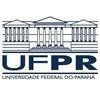Explore all the information on
Antimicrobials in poultry
Antimicrobial agents are essential tools for treating and controlling bacterial infections in poultry production. Veterinarians have a huge responsibility when using antimicrobials in poultry producing meat and eggs for human consumption. The term ‘judicious use’ of antimicrobials implies the optimal selection of drug, dose and duration of antimicrobial treatment, along with a reduction in inappropriate and excessive use as a means of slowing the emergence of antimicrobial resistance. The proper use of antimicrobials depends on the knowledge of interrelationships between bacteria, antimicrobial, host and consumer. The antimicrobial groups most commonly used in poultry are the betalactams, polypeptides, aminoglycosides and aminocyclitols, macrolides and lincosamides, florfenicol, tetracyclines, sulphonamides, quinolones and fluoroquinolones and ionophores.
Chengbo Yang (University of Manitoba) speaks on antimicrobial alternatives, during the Symposium on Gut Health in St. Louis, USA....
Comments : 0
Recommendations: 3
INTRODUCTION Poultry and poultry products represent a popular choice of protein in the United States, with increasingly high consumption rates over the past years (Zhang et al., 2018). Poultry meat has surpassed both pork and beef in per capita consumption in the United States (USDA Economic Research Service, 2020). With this increased consumption of poultry and poultry products, there is a significant concern for contamination, thus impacting public health. Salmonella and...
Comments : 0
Recommendations: 0
Following the success of the Research Topic “ Alternatives to Antimicrobial Growth Promoters and Their Impact in Gut Microbiota, Health, and Disease: Volume II ,” we received an invitation from Frontiers to work on Volume II. This second volume includes 31 scientific articles, in the text of individual chapters in this Frontiers Research Topic. The editors are grateful to all 197 authors that contributed and participated in the achievement of Volume II. Homo...
Comments : 0
Recommendations: 2
Necrotic Enteritis (NE) outbreaks cause an estimated US$6 billion financial loss per annum to the global poultry industry (Wade & Keyburn, 2015). With discontinuation of antibiotic growth promoters (AGPs) in Europe and implicit withdrawal of AGPs worldwide, a global research effort has been made to find alternative solutions to minimise diseases in animal production including NE. The current study investigated the benefits of a Bacillus subtilis derived probiotic (Bs29784) in NE...
Comments : 0
Recommendations: 1
Breno Beirão (Universidade Federal do Paraná, Brazil) commented on the needs of farmers in order to make a successful transition and comply with the current demands of the industry, during IPVS2022 in Rio de Janeiro, Brazil....
Comments : 5
Recommendations: 1
I. INTRODUCTION Antimicrobial resistance (AMR) is one of the most prominent health and biosecurity issues affecting animals and humans in modern society (WHO, 2017). Owing to the complex biology whereby AMR can develop and be harboured in a multitude of host animal species and the environment, it is arguably the biosecurity issue that best epitomises the need for a One Health approach to management. In recent decades, we have seen the emergence of critically important...
Comments : 0
Recommendations: 0
I. INTRODUCTION To introduce myself, I am a veterinarian by profession, a poultry veterinarian by accident and I am a field veterinarian by choice. My role as a field veterinarian (along with other professionals and the management team) is to turn expensive feed into profitable meat as efficiently as possible. Thus, my focus on-farm is on bird health and flock management to achieve the best biological performance we can. But along with that brief is the ‘social...
Comments : 0
Recommendations: 1
I. INTRODUCTION Antibiotic stewardship and the judicious use of antibiotics as treatment for specific disease occurrences, rather than using sub-therapeutic doses for growth promotion, are well established concepts within the Australian poultry industry (Alfirevich, 2018). Intensive production systems however, are prone to increased stressors and large scale production does not always meet the individual needs of each bird. Optimising production performance within this...
Comments : 0
Recommendations: 1
...
Comments : 2
Recommendations: 1
...
Comments : 0
Recommendations: 0
...
Comments : 0
Recommendations: 0
There has been a lot of talk and discussions on the benefits of reducing or completely removing the use of antibiotics in livestock, particularly in poultry and swine, here in Asia and yet, so far, only a few countries have implemented regulations. As many antimicrobials are used in the livestock sector, studies have suggested that antimicrobial resistance (AMR) may be widely prevalent. Regulation on antimicrobial use is either weak or non-existent, complicated by sub-optimal enforcement and...
Comments : 0
Recommendations: 3
INTRODUCTION Salmonella and Campylobacter continue to be pathogens of concern associated with poultry and poultry products, which raise a public health issue globally (Antunes et al., 2016). As per the foodborne illness source estimation reports for 2016, Salmonella and Campylobacter are responsible for about 18 and 64% of poultry-related foodborne illnesses in the United States, respectively (IFSAC, 2018). With the increasing episodes of illnesses because of these pathogens,...
Comments : 0
Recommendations: 0
INTRODUCTION Consumption of poultry meat has increased significantly in the United States and currently ranks as the highest consumed among meat species (National Chicken Council, 2020). With increasing chicken meat consumption, greater number of broilers are being raised and processed. Foodborne pathogens Salmonella and Campylobacter are commensals in broiler gastrointestinal tract and, in most cases, do not cause any disease in the birds. Current poultry processing system...
Comments : 0
Recommendations: 0
INTRODUCTION Necrotic enteritis (NE) is a poultry illness caused by toxin-producing strains of Clostridium perfringens (CP) type A, type C and type G (1). NE is a pathology of global concern, with important consequences for flock productivity and economic viability (2). The total cost of NE outbreaks worldwide has been estimated to be over 2 billion dollars annually (3, 4). NE can present itself as a sudden increase in mortality or simply as a subclinical illness (2). CP is...
Comments : 2
Recommendations: 0
Introduction An increasing global population and food security needs have imposed a great pressure on poultry and livestock sectors to increase their production utilizing limited resources (1).Consequently, sub-therapeutic doses of antibiotics are being used widely in poultry as animal growth promoters and for prophylaxis (2). This is particularly true in low and middle income countries where poultry industries are playing an important role in their national economy...
Comments : 0
Recommendations: 0
...
Comments : 0
Recommendations: 1
...
Comments : 0
Recommendations: 1
1. Introduction In the Nigerian’ poultry value chain, live bird markets (LBMs) are essential to the farmers for the preferential sales and marketing of poultry and poultry products for human consumption [1]. The LBMs are typically in urban, peri-urban, and rural settings and typified by permanently placed pen-like structures in which the chickens can be temporarily housed until they are sold [2]. The LBMs bring together a variety of multi-farmed, multisourced, and...
Comments : 2
Recommendations: 1
The history of antibiotic use in poultry feed is quite old and in a very short period of time it gained a special identity as an antibiotic growth promoter (AGP). There is no doubt, this special name came from its proven effect on the growth performance. However, Health officials desperate to maintain the efficacy of...
Comments : 0
Recommendations: 4














.jpg&w=3840&q=75)








.jpg&w=3840&q=75)
















